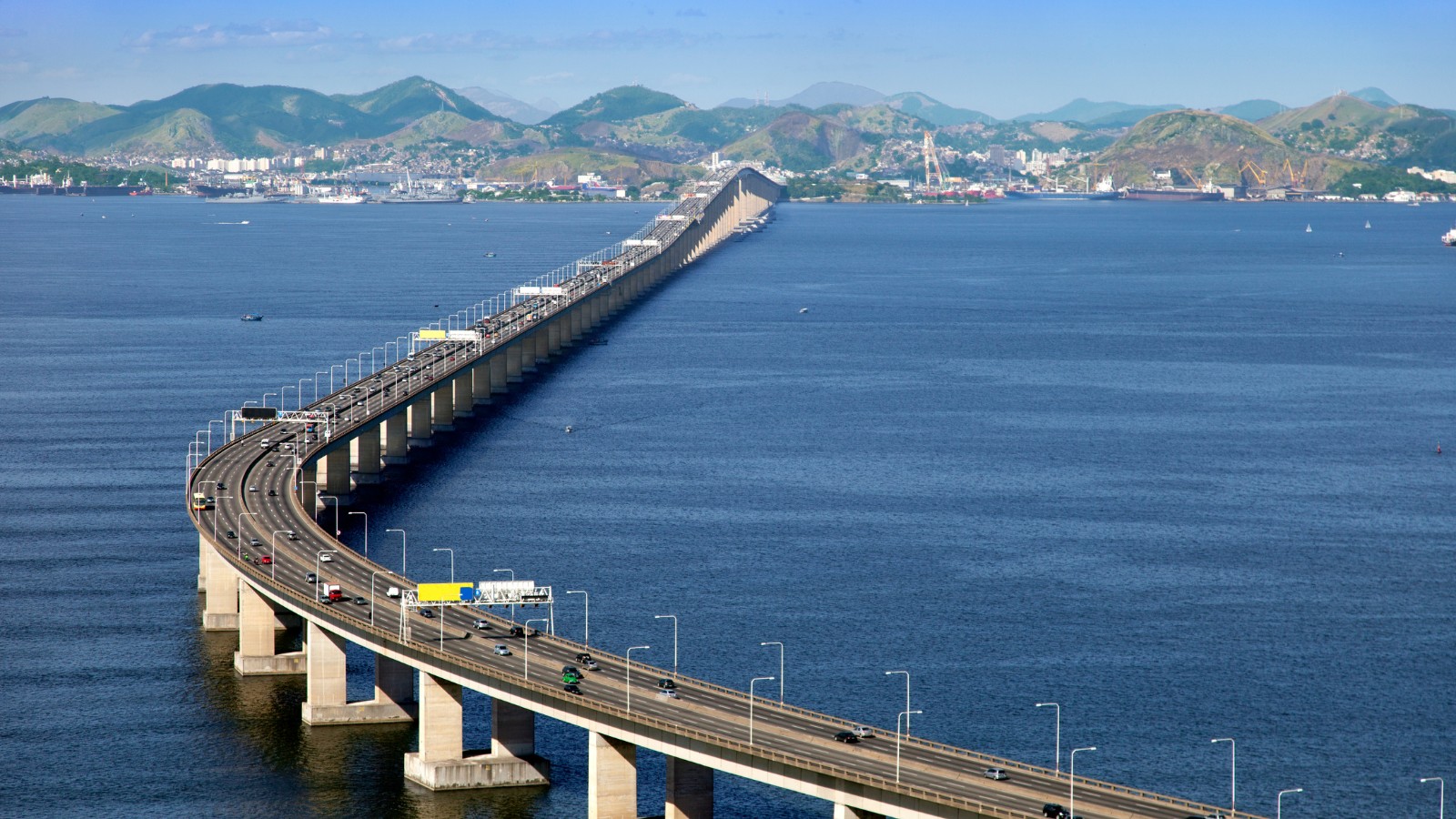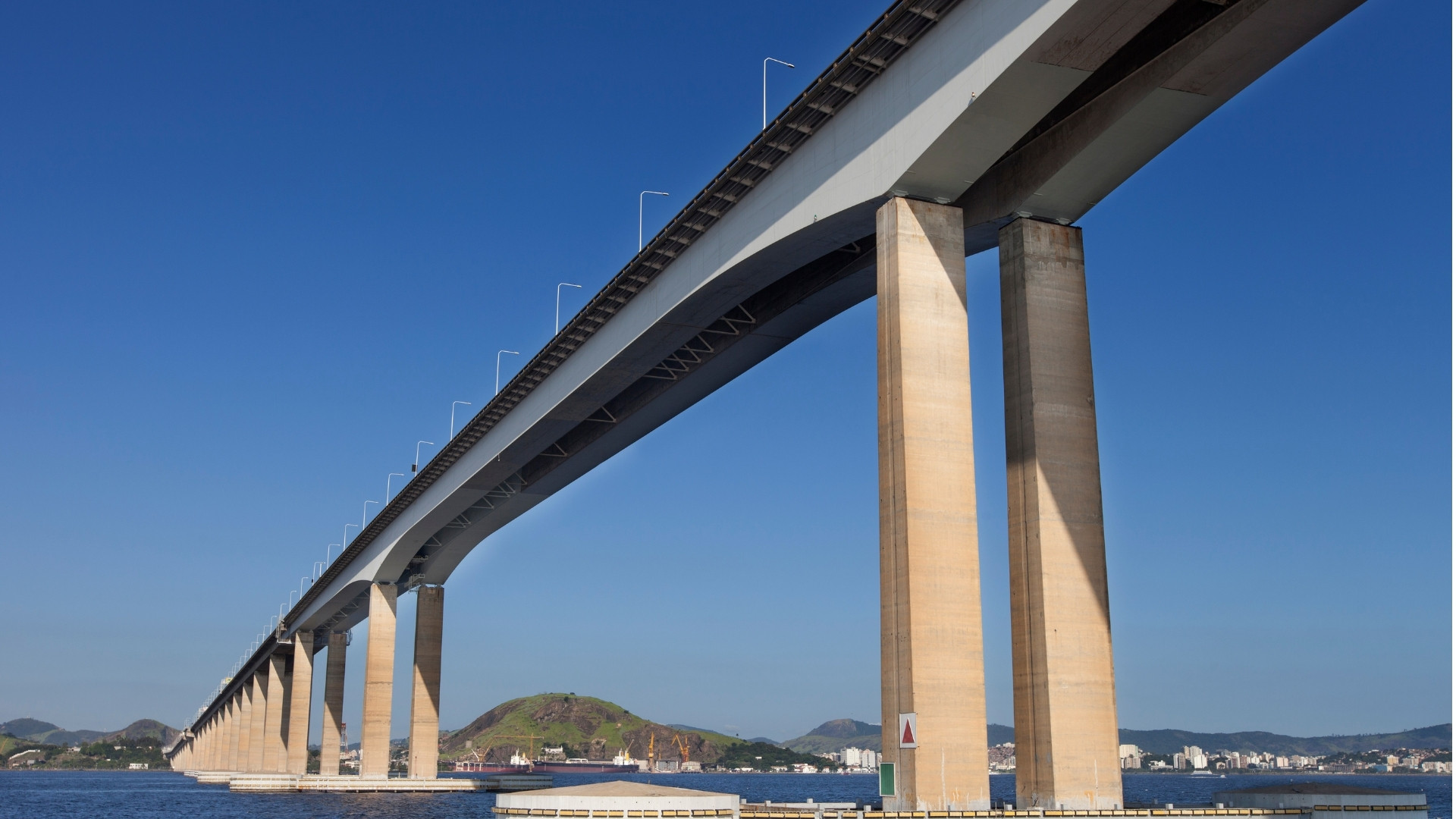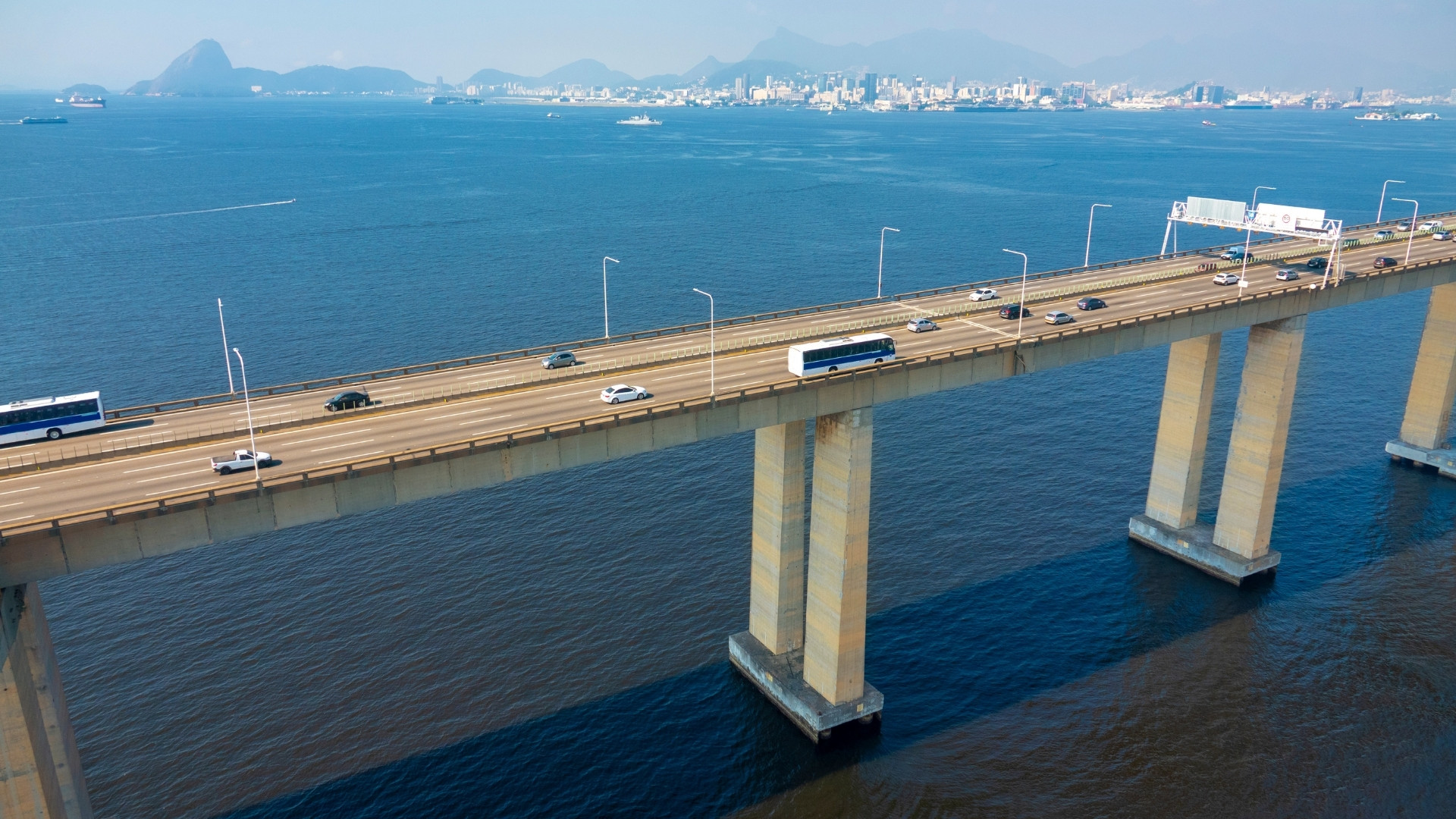
Stretching over Guanabara Bay, the Rio-Niterói Bridge offers breathtaking views and seamless connectivity between Rio de Janeiro and Niterói.
Highlights
- Journey over the striking 13.29 km bridge and take in sweeping bay vistas.
- Capture stunning photographs of the bridge from top viewpoints like Praça XV and Boa Viagem Beach.
- Admire the bridge from the water on a scenic ferry or boat cruise in Guanabara Bay.

What to See and Do
Whether you’re driving across its vast expanse, admiring it from a scenic lookout, or cruising beneath its towering supports, the Rio-Niterói Bridge offers a unique way to experience the beauty of Guanabara Bay.
Drive Across the Bridge
The best way to truly grasp the scale of the Rio-Niterói Bridge is to drive across it. Stretching over 13 km (8.26 miles) over Guanabara Bay, it’s one of the longest bridges in the world. As you drive, you’ll be treated to an expansive panorama of Rio’s skyline, Sugarloaf Mountain, and the deep blue waters below.
Expect heavy traffic at peak times—visiting early in the morning or late in the afternoon can help you avoid the jams.
View from a Distance
Not driving? No problem. Some of the best views of the bridge come from the land, where you can appreciate its sheer size from different angles.
- Praça XV (Rio de Janeiro side) – A great spot to see the bridge stretching across the bay, especially at sunset.
- Boa Viagem Beach (Niterói side) – If you want a beachfront backdrop for your bridge photos, this is the place to go.
- Museum of Contemporary Art (MAC) in Niterói – Designed by the legendary Oscar Niemeyer, this UFO-shaped museum offers one of the most iconic views of the bridge. Bonus: You can explore world-class art while you’re there!
These spots are particularly popular with photographers, especially during sunrise or sunset, when the golden light reflects off the water and highlights the bridge’s elegant design.

Boat Tours for a Unique Perspective
If you want a completely different standpoint, take to the water! Ferries and boat tours operate daily in Guanabara Bay, offering a spectacular vantage point from below the bridge.
The ferries from Praça XV (Rio) to Arariboia Terminal (Niterói) are an affordable way to get up close without splurging on a private tour.
But if you’re looking for something more special, consider a sunset cruise or a guided boat tour that covers the bridge, the bay, and other famous sights like Sugarloaf Mountain and Flamengo Beach.
The combination of the ocean breeze, scenic perspective, and the bridge’s towering presence overhead makes for an unforgettable experience.
Directions
The Rio-Niterói Bridge is part of Brazil’s BR-101 highway, making it easily accessible by car for those traveling between Rio de Janeiro and Niterói. The drive across showcases the beauty of Guanabara Bay, but traffic can be heavy during peak hours, so it’s best to plan accordingly.
For those using public transport, frequent buses run between the two cities via the bridge, providing an affordable and convenient option. Alternatively, ferries operate from Praça XV (Rio) to Niterói’s Arariboia Terminal, offering a scenic route with breathtaking sights of the bridge and surrounding bay.
Nearby Places
Museum of Contemporary Art (MAC): Designed by the legendary Oscar Niemeyer, this futuristic, UFO-shaped museum overlooks Guanabara Bay and houses an impressive collection of modern art.
Parque da Cidade: A hilltop park in Niterói showcasing the Rio-Niterói Bridge, Sugarloaf Mountain, and the bay, making it a favorite spot for photographers and paragliders.
Icaraí Beach: A scenic beach in Niterói with a relaxed atmosphere featuring the bridge and surrounding rock formations, perfect for a peaceful stroll or a sunset picnic.
Sugarloaf Mountain: One of Rio’s most famous landmarks, this towering peak offers a thrilling cable car ride and a stunning perspective of the city, Guanabara Bay, and the Rio-Niterói Bridge.
Guanabara Bay: The vast bay over which the bridge stretches, with boat tours that showcase the bridge from a unique angle and provide access to nearby islands and breathtaking coastal scenery.
Did you know that: (5 Interesting Facts!)
- The Rio-Niterói Bridge was the longest prestressed concrete bridge in the world when it was completed in 1974.
- The bridge’s highest point reaches 72 meters (236 feet) above the water to allow large ships to pass underneath.
- It took over 4,000 workers and six years to complete the construction of the bridge.
- The bridge was originally planned in the 19th century, but construction didn’t begin until 1968.
- More than 150,000 vehicles cross the bridge every day, making it one of Brazil’s busiest thoroughfares.

History
- 1875: Emperor Dom Pedro II first proposes the idea of a bridge across Guanabara Bay, but the plan never moves forward due to financial and technical limitations.
- 1963: As Brazil’s economy grows, the government finally approves the construction of a bridge to connect the two cities.
- 1968: Construction officially begins under the administration of President Artur da Costa e Silva. The project is a massive undertaking, requiring cutting-edge engineering to support the bridge’s length and withstand strong bay winds.
- 1974: After six years of construction and the labor of more than 4,000 workers, the Rio-Niterói Bridge is inaugurated on March 4, 1974. At the time, it is the longest bridge in the Southern Hemisphere and one of the longest in the world.
- 1990s: With increasing traffic demands, the bridge undergoes major renovations to reinforce its structure and improve traffic flow.
- Present Day: Today, the bridge remains one of Brazil’s busiest highways, carrying more than 150,000 vehicles daily. It stands as a vital connection between Rio de Janeiro and Niterói, fulfilling a vision first imagined over a century ago.
FAQ
How long is the Rio-Niterói Bridge?
The bridge spans 13.29 km (8.26 miles), making it one of the longest bridges in the world.
Can you walk or bike across the bridge?
No, pedestrians and cyclists are not allowed on the bridge due to safety regulations.
What is the best way to see the bridge without driving?
Visitors can take a ferry from Praça XV (Rio) to Arariboia Terminal (Niterói) for great views of the bridge.
Does the bridge have a toll?
Yes, there is a toll for vehicles traveling from Niterói to Rio de Janeiro, but the reverse direction is toll-free.
What is the busiest time to cross the bridge?
Rush hours (7 AM – 10 AM and 5 PM – 8 PM) tend to have heavy traffic, so it’s best to avoid these times if possible.